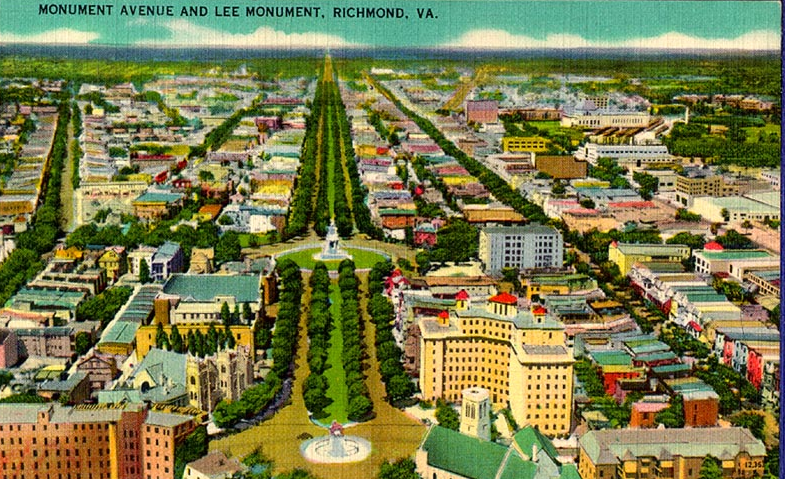
the Robert E. Lee monument was designed to be a central point on Monument Avenue
Source: Virginia Commonwealth University (VCU), Monument Avenue and Lee Monument, Richmond, Va.

the Robert E. Lee monument was designed to be a central point on Monument Avenue
Source: Virginia Commonwealth University (VCU), Monument Avenue and Lee Monument, Richmond, Va.
Monument Avenue had five monuments highlighting Confederate leaders that were installed between 1890-1929, plus one statue of Arthur Ashe installed in 1996:
The National Park Service description of the Monument Avenue Historic District states:1
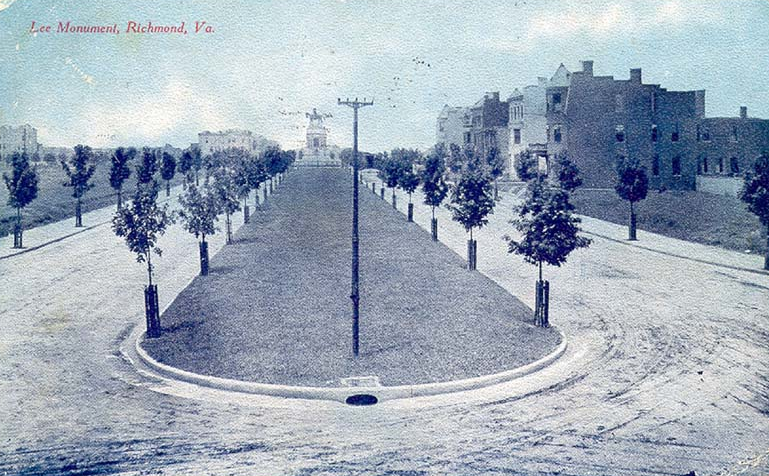
Monument Avenue around 1907, when the trees were young
Source: Virginia Commonwealth University (VCU), Lee Monument, Richmond, Va.
Monuments that commemorated and celebrated Confederate leaders helped Richmond maintain its reputation as the capital of the Confederacy, but not all residents were happy with that focus. The racial mix of the city affected perspectives, and by 2017 only 40% of the population identified themselves as "White alone, not Hispanic or Latino."2
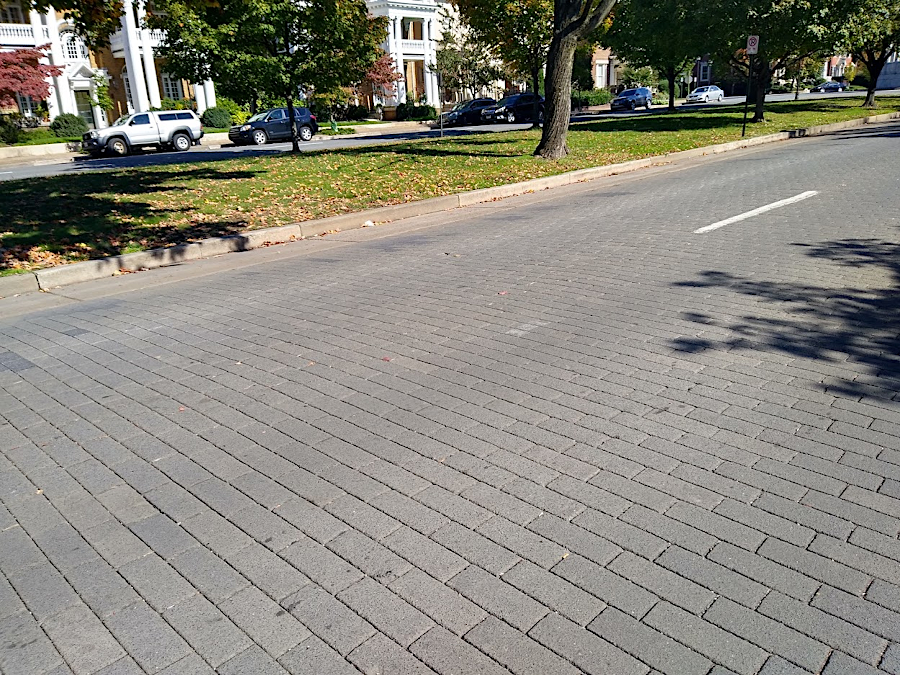
Monument Avenue paving blocks create a distinctive rumble for cars traveling on the street
The murder of nine people in a Charleston, South Carolina church in 2015 spurred local leaders to re-examine how to acknowledge the past, without giving Confederate memorials their historically-dominant position in public spaces across Virginia. Richmond mayor Levar Stoney established a Monument Avenue Commission in June, 2017 and charged it to hold public forums to obtain feedback.
The original plan was for the commission to explore how to expand interpretation of existing monuments, and potentially add new monuments to dilute the focus on Confederate leaders. After the Unite the Right rally in Charlottesville resulted in violence and death of a demonstrator and two state policemen in August, that mission was expanded to consider removing monuments.3
Adding monuments was not a new idea. A statue of Arthur Ashe, a tennis champion from Richmond who had overcome the constraints of segregated tennis facilities, had been added to Monument Avenue in 1996. In 2017, the head of the Danville chapter of the Heritage Preservation Association was still opposed to honoring Ashe with a statue in that location, claiming that in 1996:4
The commission's July, 2018 report recommended removing the statue of Jefferson Davis, who was not from Virginia, and adding signage at other monuments to provide a broader range of perspectives on what the statues represent.5
In 2020, national protests erupted after the murder of George Floyd by police officers in Minneapolis. Protests in Richmond focused on the Confederate monuments. All were defaced by graffiti and protesters tore down the Jefferson Davis statue.
Mayor Levar Stoney transformed the city by hiring a contractor to remove the statues and pedestals to Confederate leaders on Monument Avenue, and wherever else such monuments were located on city-owned land, using authority under a new state law that went into effect on July 1, 2020. Only one contractor in town was willing to take the contract to remove the statues, led by a black man named Devon Henry. He recognized that taking the job would put his company and even his life at risk, and ended up having to hire the crane from a contractor in Connecticut.
The first to be removed was the statue to General Stonewall Jackson. The swift action on July 1 caught most of Richmond by surprise. Mayor Stoney stayed in a secret location so he could not be served any court papers, in case opponents sought an injunction to block the action.
A state court did delay removal of the statue to Robert E. Lee, which was on state-owned land. Team Henry Enterprises took it down on September 8, 2021. The last Confederate statue on city-owned land, to General A. P. Hill, came down in 2022. When it was removed, Mayor Stoney said:6
The city paid $1.8 million to remove the statues, plus an additional $1.5 million to remove the pedestals. The state paid $2.1 million to remove the Lee statue. The Jefferson Davis statue was transferred to the Valentine Museum and put on display there, complete with graffiti. The other statues were taken to a vacant space at Richmond's wastewater treatment plant and stored there, out of sight. Ownership of the statues was transferred to the Black History Museum.
The General Assembly approved $1 million in 2021 for a design to "reimagine" Monument Avenue and Governor Northam tasked the Virginia Museum of Fine Arts to lead the effort. The state museum withdrew from the project at the end of 2021 after the monument to Robert E. Lee was taken down and the state transferred the land at that Monument Avenue circle to the city of Richmond. A spokesperson for museum said:7
The sites of the former statues were landscaped with ordinary grass and flowers, with no indication that they were once home to Confederate memorials. The Monument Avenue Commission stayed in business, but produced no recommendations during the remainder of Mayor Stoney's term.8
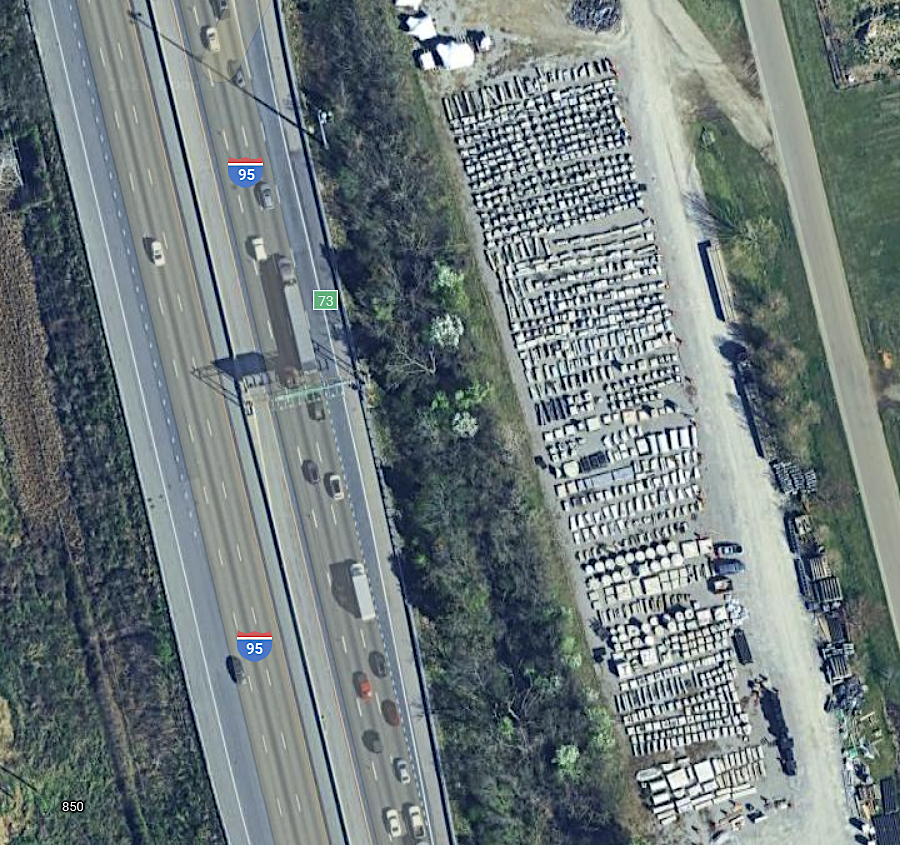
most remnants of Confederate monuments from Monument Avenue ended up stored at the city's wateewater treatment plant
Source: GoogleMaps
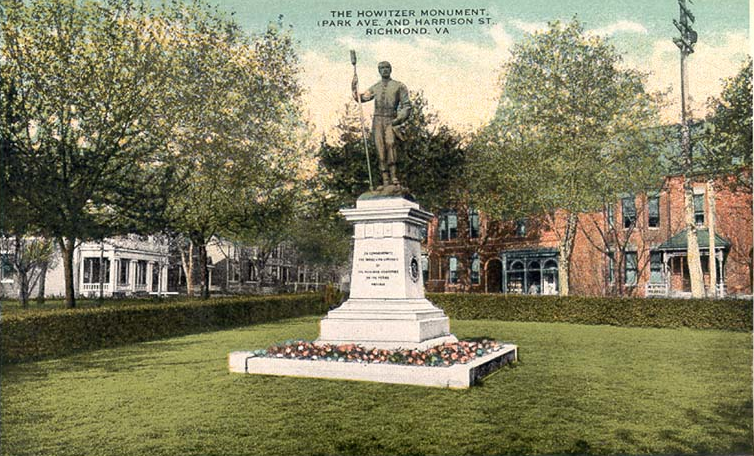
statues to honor Confederate soldiers were erected near Monument Avenue, as well as the statues of the leaders placed in the center of that street
Source: Virginia Commonwealth University (VCU), Howitzer Monument (Park Ave. and Harrison St., Richmond, Va.